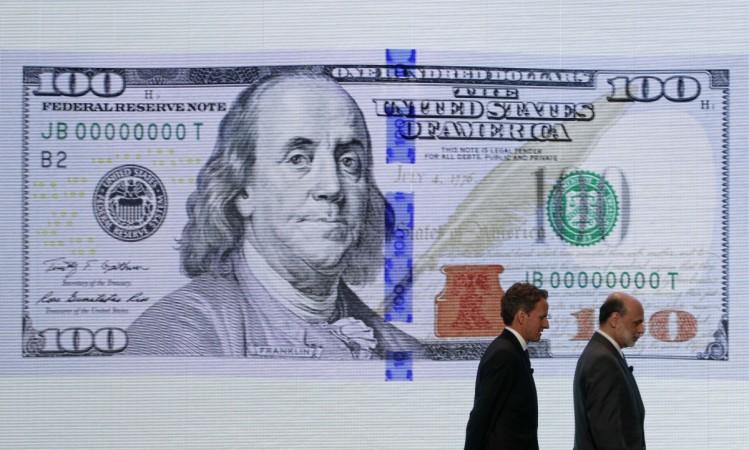
The Federal Reserve on Wednesday renewed its pledge to keep interest rates near zero for a "considerable time," but also indicated it could raise borrowing costs faster than expected when it starts moving.
Many economists and traders had expected the U.S. central bank to alter the rate guidance it has provided since March, given generally improving data on the economy's performance.
But the Fed repeated its assurance that rates would stay ultra-low for a "considerable time" after a bond-buying stimulus program ends. In a statement after a two-day meeting of its policy-setting Federal Open Market Committee, it announced a further $10 billion reduction in its monthly purchases, leaving the program on course to be shuttered next month.
The statement was virtually unchanged from July, though new quarterly projections released with it showed the central bank's view on where interest rates should be in future years is diverging from where financial markets have bet they will be.
"While the much analyzed phrase 'considerable time' remained in the FOMC statement, the newly announced scheme for interest rate normalization shows that higher rates are in the cards," said John Kilduff, a partner at Again Capital LLC in New York.
Dallas Federal Reserve Bank President Richard Fisher and Philadelphia Fed chief Charles Plosser dissented, arguing the guidance on rates could tie the central bank's hands if it felt it had to move more quickly to tighten monetary policy.
The Fed has held benchmark overnight rates near zero since December 2008 and has more than quadrupled its balance sheet to $4.4 trillion through a series of large-scale bond purchase programs.
In a further sign the central bank is in no rush to start raising rates, the FOMC repeated its assessment that a "significant" amount of slack remains in the U.S. labor market.
Stocks were little changed after the statement, but the dollar hit its highest level against the Japanese yen since September 2008. Yields on U.S. Treasury bonds rose to session highs as traders moved to price in the possibility of higher future rates.
The most significant change was the new rate projections, which suggested officials were positioning themselves for a potentially faster pace of rate hikes than they had envisioned when the last set of forecasts were released in June.
For the end of next year, the median projection was 1.375 percent, compared to 1.125 percent in June, while the end-2016 projection moved up to 2.875 percent from 2.50 percent. For 2017, the median stood at 3.75 percent - the level officials see as neither stimulative nor restrictive.
By contrast, December 2015 federal funds futures imply an interbank lending rate of 0.745 percent at the end of next year. Contracts for December 2016 point to a rate of 1.85 percent.
Eric Lascelles, chief economist for RBC Global Asset Management in Toronto, called the 2017 projections a "shocker."
"I would have thought it would take a few more years to get all the way up to what they perceive to be a neutral rate," he said.
Fed Chair Janet Yellen played down the shift in a news conference after the statement was released.
"I would say there is relatively little upward movement in the (federal funds rate) path," she told reporters. "I would view it as broadly in line with what one would expect with a very small downward reduction in the path for unemployment and a very slight upward change in the projection for inflation."
EXIT STRATEGY
The Fed also released a new blueprint for how it plans to exit the extraordinary monetary stimulus it put in place to combat the 2007-09 financial crisis and recession.
It said it expects to end or phase out the reinvestment of proceeds from its bond holdings some time after it begins raising rates, depending on the state of the economy.
In addition, it said it would move its target for the overnight federal funds rate by adjusting the amount it pays banks for excess reserves they hold at the central bank. Another tool, so-called overnight reverse repurchase agreements, would play a supporting role.
Prior to this week's policy meeting, several Fed officials said they were uncomfortable with the central bank's rate guidance, given that it was pegged to a calendar reference and not the economy's progress.
Many economists said it would likely get stripped from the statement after the Fed's next meeting in October.

















